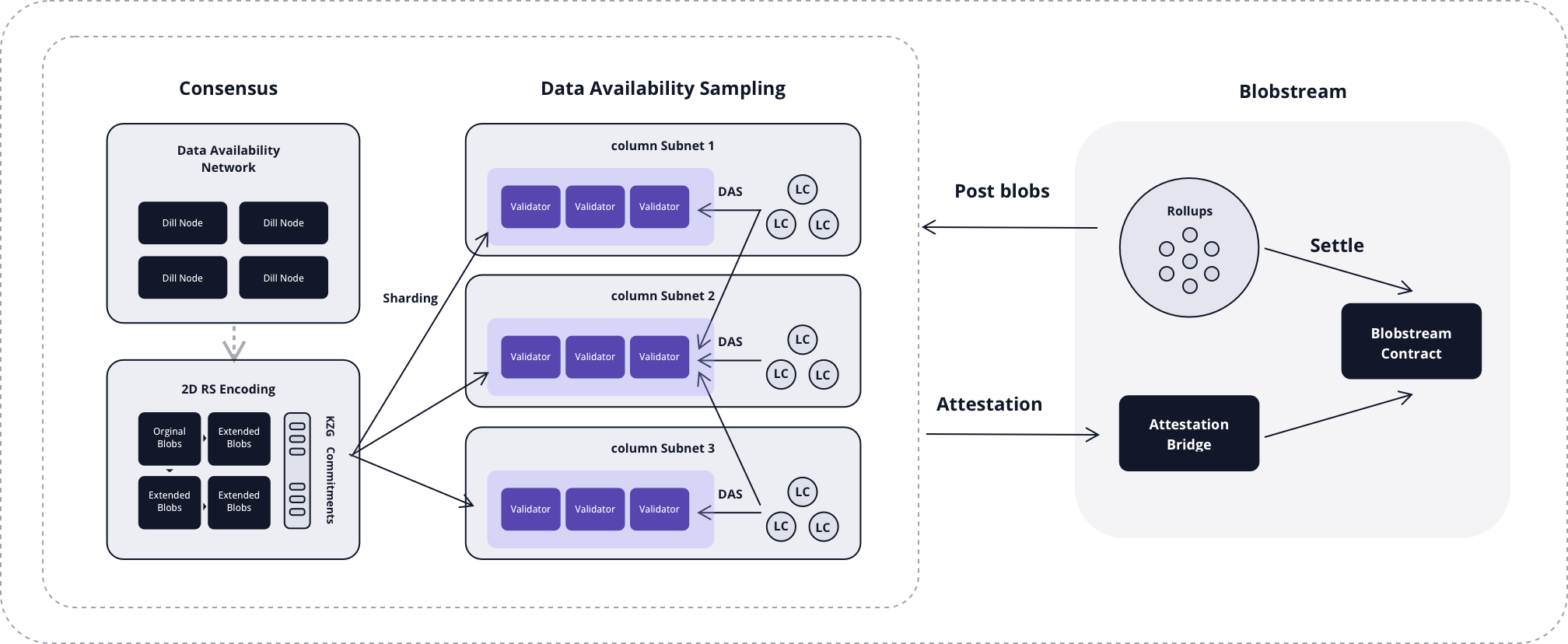Architecture
Dill is a modular blockchain network focused on data availability. A modular blockchain can be divided into four functions: Execution, Settlement, Consensus and Data Availability (DA). Dill provides consensus layer and data availability layer functionality, allowing Rollups to focus on the remaining Execution and Settlement functions. Compared to a single blockchain handling all functions, a modular blockchain allows each layer to perform at its best, improving overall throughput.
Dill can be divided into three parts according to different functions: Consensus, Data Availability Sampling and Blobstream.

The Consensus part includes a blockchain network composed of Dill Nodes, responsible for ordering transactions and blob data received. The ordered data is then organized into blocks through 2D EC and KZG commitments. Finally, the blocks are sharded into different columns, which are then broadcast to different column subnets.
The Data Availability Sampling part verifies the validity of blocks through column sampling. Validators will verify the data of one or more columns in the block and sign voting results. Light clients will verify cells in a column to determine whether to accept the block based on the results.
How can Rollups verify that the blob data uploaded to Dill has been correctly stored? This requires the help of the Blobstream part. After Dill generates a block containing the Rollups' blob data, the corresponding attestation will be passed to the Attestation Bridge. The Attestation Bridge generates a proof and uploads it to an EVM contract deployed called the Blobstream Contract. Then Rollups can confirm the blob data has been stored by verifying the proof.